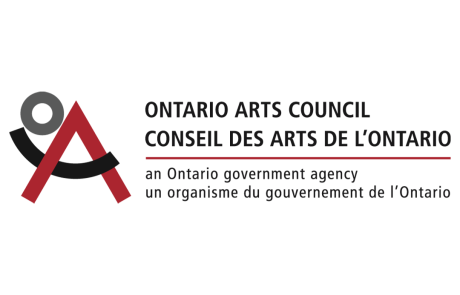Witness: A Symposium on the Woodland School of Painters
Edited by Bonnie Devine
A joint publication by the Aboriginal Curatorial Collective and Witness
Introduction
The gathering in Sudbury called Witness brought together some of the most influential and renowned artists and scholars in the world of contemporary Canadian Aboriginal art. Hosted by the Art Gallery of Sudbury and Laurentian University from October 11 to 14, 2007, Witness coincided with the opening of The Drawings and Paintings of Daphne Odjig, a Retrospective Exhibition, at the Art Gallery of Sudbury. Aboriginal artists, activists, curators, and art historians came together for a weekend of talk and celebration to honor Daphne Odjig and reflect on the history, current state, and future of contemporary Aboriginal art, especially the Anishnaabe style that emerged in the 1960s in Ontario and came to be known as the Woodland School.
Among the noted guests, performers, and speakers at the symposium were Daphne Odjig, performance artists Rebecca Belmore and De ba-jeh-mu-jig Theatre Group; painters Leland Bell, Blake Debassige, Robert Houle, Alex Janvier, and Joseph Sanchez; curators Barry Ace, Greg Hill, and Ryan Rice; scholars and educators Tom Peltier, Sherry Farrell Racette, and Sandra Wabegijig; and historians Alan Corbiere and Margo Little.
Witness was particularly honored to welcome Daphne Odjig, Alex Janvier, and Joseph Sanchez, who are the surviving members of Professional Native Artists Inc., popularly known as the Indian Group of Seven. This seminal group formed in the early 1970s in Winnipeg and also included Norval Morriseau, Jackson Beardy, Carl Ray, and Eddie Cobiness.
In his paper, Joseph Sanchez describes the origins and enduring influence of this collective of artists of Native ancestry. Presentations by Barry Ace, Ryan Rice, and Greg Hill provide contemporary and historical curatorial perspectives. Leland Bell, Sandra Wabegijig, the late Tom Peltier, all of Wikwemikong, and artist and art historian Dr. Sherry Farrell Racette of Timiskaming offer illuminating context and historical background toward an understanding and appreciation of Woodland pictorial traditions, while Robert Houle’s paper offers a rare glimpse into an artist’s imaginative and investigative process. Finally, impromptu closing remarks by Alex Janvier remind us of the inspiration and fortitude that sustains and drives all creative endeavor.
Two memorable performance pieces premiered at Witness. The first, Red Road, by Rebecca Belmore, took place on a winding rain-soaked path outside the Fraser Auditorium on the grounds of Laurentian University. Lit by a parked car’s headlights and the light of lampposts, the audience watched Belmore enact the passionate commitment of an artist at her work.
Dear Daphne, created and performed by De-ba-jeh-mu-jig Theatre Group, was a beautifully staged series of vignettes, which were punctuated by statements read by the young actors to Odjig, who was seated in the audience.
Witness was a celebration and an education. Old friendships were renewed, new ones begun. Young artists met their idols, elders saw the promise of the future. The Aboriginal Curatorial Collective in collaboration with Witness is pleased and honored to present this collection of selected proceedings of the historic event.
Bonnie Devine
Witness Artistic Director and Editor
2009
Read the Selected Proceedings of Witness: A Symposium on the Woodland School of Painters, Sudbury Ontario, October 12, 13, 14, 2007
 Bonnie Devine is a member of the Serpent River First Nation,[1] an Anishinaabe/Ojibwe territory in central Ontario on the north shore of Lake Huron. She is an installation artist, painter, curator, writer, and educator. Her work emerges from a deep interest in and commitment to the storytelling and pictorial traditions that are central to the history and development of Anishinaabe culture. These interests are central to her art practice and are expressed in image and object, video and teaching, storytelling and political ideas. They also inform her work as an independent curator.
Bonnie Devine is a member of the Serpent River First Nation,[1] an Anishinaabe/Ojibwe territory in central Ontario on the north shore of Lake Huron. She is an installation artist, painter, curator, writer, and educator. Her work emerges from a deep interest in and commitment to the storytelling and pictorial traditions that are central to the history and development of Anishinaabe culture. These interests are central to her art practice and are expressed in image and object, video and teaching, storytelling and political ideas. They also inform her work as an independent curator.
History and narrative are at the centre of her work. From earliest childhood her art has been about stories – the voices that tell them, the bodies that carry them and the land that inspires them.
Devine’s drawings, videos, sculptures, and installations have been exhibited in solo and group exhibitions in Canada, the USA, South America, Russia, and Europe.










